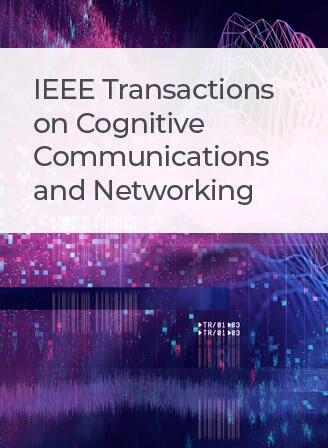利用智能反射面进行面向边缘智能的共生通信的联合传感、通信和计算
IF 7.4
1区 计算机科学
Q1 TELECOMMUNICATIONS
IEEE Transactions on Cognitive Communications and Networking
Pub Date : 2024-08-06
DOI:10.1109/TCCN.2024.3439589
引用次数: 0
摘要
共生无线电通过后向散射或环境反射利用了无源通信和认知无线电的优势,是一种前景广阔的模式,可支持大量具有高频谱效率和能源效率的物联网设备。对于边缘智能,从异构设备(包括无线传感设备和有线传感设备)收集数据给高效模型训练带来了挑战。基于智能反射面(IRS)的共生无线电利用后向散射系统中的智能反射面,在射频域对信息进行被动调制,同时加强主链路和后向散射链路,为解决这一问题提供了一种前景广阔的解决方案。在本文中,我们研究了采用 IRS 的面向边缘智能的共生无线电的联合传感、通信和计算。具体来说,IRS 不仅能增强主通信,为无线传感设备传输传感数据,还能通过在主通信信号上调制数据,将有线传感设备的数据传输到边缘服务器。我们提出了一个联合优化传感策略(即传感持续时间和传感速率)、通信策略(即 IRS 反射矩阵和数据上传持续时间)和计算策略(即无线传感设备和边缘服务器的计算能力)的问题,目的是使整个系统的能效最大化。本文提出了一种高效算法来解决所提出的优化问题,并提供了充分的数值结果来证明其性能优势。本文章由计算机程序翻译,如有差异,请以英文原文为准。
Joint Sensing, Communication and Computation for Edge Intelligence Oriented Symbiotic Communication With Intelligent Reflecting Surface
Symbiotic radio, which exploits the benefits of passive communications and cognitive radio via backscattering or ambient reflecting, is a promising paradigm to support a large amount of Internet of Things devices with high spectrum efficiency and energy efficiency. For edge intelligence, data collection from heterogeneous devices including wireless sensing devices and wired sensing devices brings challenge for efficient model training. Intelligent reflecting surface (IRS) based symbiotic radio, which exploits IRS in backscatter systems to passively modulate information in the radio-frequency domain and strengthen both the primary links and the backscatter links, provides a promising solution to address this issue. In this paper, we investigate the joint sensing, communication and computation for edge intelligence oriented symbiotic radio with IRS. Specifically, IRS not only enhances the primary communication to deliver the sensing data for wireless sensing devices, but also delivers the data from wired sensing device to the edge server by modulating the data on the primary communication signal. We formulate a problem to jointly optimize the sensing strategies (i.e., the sensing durations and the sensing rates), the communication strategies (i.e., the IRS reflecting matrix and the data uploading durations) and the computing strategies (i.e., the computing capacities of the wireless sensing devices and the edge server), with the objective of maximizing the energy efficiency of the whole system. An efficient algorithm is proposed to solve the formulated optimization problem, with sufficient numerical results provided to demonstrate the performance advantages.
求助全文
通过发布文献求助,成功后即可免费获取论文全文。
去求助
来源期刊

IEEE Transactions on Cognitive Communications and Networking
Computer Science-Artificial Intelligence
CiteScore
15.50
自引率
7.00%
发文量
108
期刊介绍:
The IEEE Transactions on Cognitive Communications and Networking (TCCN) aims to publish high-quality manuscripts that push the boundaries of cognitive communications and networking research. Cognitive, in this context, refers to the application of perception, learning, reasoning, memory, and adaptive approaches in communication system design. The transactions welcome submissions that explore various aspects of cognitive communications and networks, focusing on innovative and holistic approaches to complex system design. Key topics covered include architecture, protocols, cross-layer design, and cognition cycle design for cognitive networks. Additionally, research on machine learning, artificial intelligence, end-to-end and distributed intelligence, software-defined networking, cognitive radios, spectrum sharing, and security and privacy issues in cognitive networks are of interest. The publication also encourages papers addressing novel services and applications enabled by these cognitive concepts.
 求助内容:
求助内容: 应助结果提醒方式:
应助结果提醒方式:


